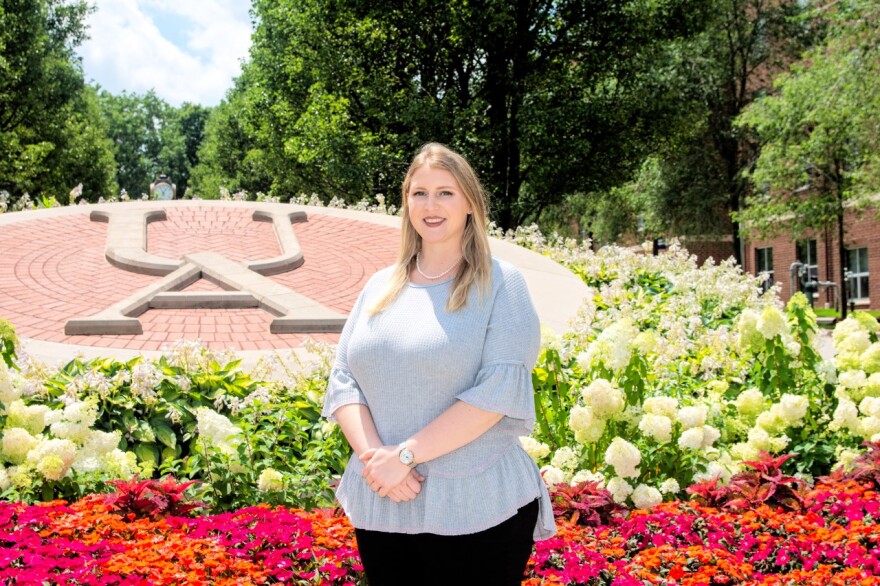The University of Akron is undergoing unprecedented challenges as it struggles to close a $65 million budget gap.
Its response includes a radical redesign of the school’s academic structure.
What will it mean for the future of Akron’s flagship polymer program?
Amanda Stefin was finishing her undergraduate degree in chemistry at Florida State University several years ago when she started thinking about where to go to grad school.
One of her professors advised her, "If you want to do polymers, you have to go to Akron.”
Where? “I didn’t even know how to pronounce Akron,” she said.
Now, five years later, she's ready to present her research on the molecular interactions of polymers with different types of surfaces, “but with the coronavirus that’s pushed to December.”
Even with a pandemic, four different university presidents, and the school’s financial woes, she has no regrets about coming to Akron.
“This is still one of the best decisions I’ve made,” said Stefin.
Saving a legacy program
Stefin's sentiment is a good sign following the ongoing overhaul of schools and colleges at the University of Akron.
Her assessment is important because polymers are not just a branch of chemistry, they’re what put the city and University on the map, first as the rubber capital of the world, and then as the self-proclaimed polymer capital.

Today's program is part of research dating back 130 years to the city’s first rubber scientists.
Her belief in the program supports a reputation that draws grad students from China, India, and around the world to study here.
It’s why as a University of Akron graduate in chemistry, and WKSU science reporter, I felt the need to look into the future of the school’s flagship program, partly because I believe that as goes the polymer program, so goes Akron.
This spring, all of it fell into the hands of newly hired provost John Wiencek.
What's in a name?
“I actually started a month early," said Wiencek.
This May Wiencek jumped in to help lead the massive restructuring of the University of Akron’s academic units, paring them down from 11 colleges to five.
On the chopping block was the college of polymer science and engineering.
The original faculty senate plan was to split it up, but Wiencek says former alumni, students, and even other departments weren’t having it.
“I probably got a couple hundred emails,” said Wiencek, all with the same message.
“They simply wanted to see polymer science and polymer engineering not being divided up.”
The solution was to call it a ‘school’ in the college of engineering, and keep the faculty together with room for growth.
“I’ve been telling people that this is their current starting point, that there may be additional modifications and evolutions going forward,” said Wiencek.
Ali Dhinojwala is still called interim dean of the college of polymer science and engineering, probably the last to hold that title.
He’s pleased with the compromise. “I think this is a good outcome, considering our financial challenges.”
It not clear yet what share of cost cutting polymers will absorb.
Transparency
Layoffs are looming this week and administrators are calling for 20% budget cuts across departments.
Dhinojwala says whatever his title, he will fight for his staff and students.

“It is a passion for me to make sure the legacy of this program continues, I have put my heart and soul into it, and I will continue to do it.”
Grad student Amanda Stefin feels the same. She ran for graduate student government last year and became president.
She fought for inclusion in the restructuring process, “and we were vocal and we sent out emails and we communicated and we updated the graduate students and we had feedback from them.”
She feels the university listened.
“Nothing has happened that student voices weren’t at least heard or considered," said Stefin, "at least to my knowledge.”
She believes the University of Akron, with its brand new president and leadership, handled the important step of redoing its academic structure as well as could be hoped for.
Whether that will continue, or if the changes will succeed, she said, “We’ll have to wait and see.”
The polymer program at the University of Akron is one of many that will face new challenges in coming years as the school struggles to right itself in the midst of stormy uncertainties.
Institutions across the country are fighting similar battles for survival amid the pandemic and economic upheaval.
But for Akron, the future of the university’s polymer program is a marker for the future of the polymer capital itself.






